Physics
Can a quantum spin liquid survive disorder?

One favorable situation for spins to enter the long-sought quantum spin liquid (QSL) state is when they sit on a kagome lattice. In a study led by Shiyan Li, professor at State Key Laboratory of Surface Physics, Fudan University, Yang Xu, researcher at East China Normal University, and Jiawei Mei, associate researcher at Southern University of Science and Technology, the researchers resorted to heat transport measurement, a cleaner probe in which instead of contributing directly, the disorder only impacts the signal from the kagome spins. For ZnCu3(OH)6Cl2, they observed no contribution by any spin excitation nor obvious field-induced change to the thermal conductivity. These results impose strong constraints on various scenarios about the ground state of this kagome compound: while certain quantum paramagnetic states other than a QSL may serve as natural candidates, a QSL state, gapless or gapped, must be dramatically modified by the disorder so that the kagome spin excitations are localized.
The study entitled“Heat Transport in Herbertsmithite: Can a Quantum Spin Liquid Survive Disorder?”has been published in Physical Review Letters.
https://journals.aps.org/prl/abstract/10.1103/PhysRevLett.127.267202
Material Science
Self-cleaning photoactive coating materials reported
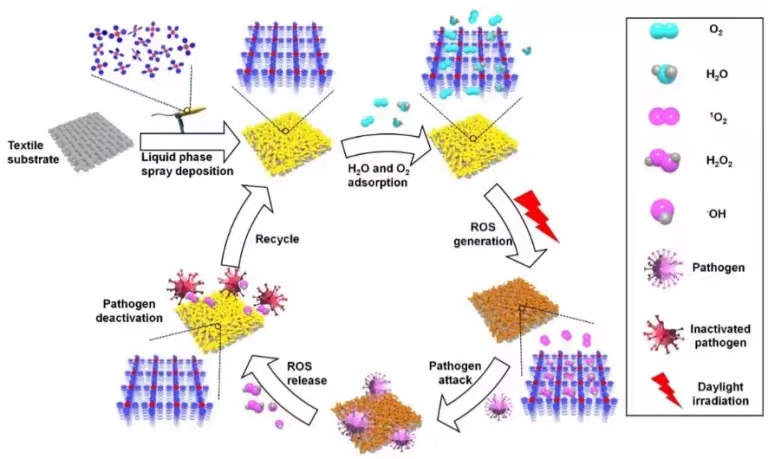
The team led by Peng Li, professor at Department of Chemistry, prepared a series of photoactive coating materials based on the crystalline porous molecular frameworks. These solution-processable porous coating materials have been fabricated on various fibers by using a liquid-phase spray deposition method (LPSD). These porous textile coatings are able to spontaneously convert adsorbed oxygen from air into reactive oxygen species (ROS) upon daylight irradiation, and store these ROS for at least 12 hours after irradiation. The unique spontaneous ROS generation and sustained storage properties of these hydrogen-bonded organic frameworks (HOFs) make them highly reactive and self-cleaning materials capable of preventing and suppressing bacterial infections regardless of whether they are employed under bright or dark conditions with daylight pre-irradiation.
The study entitled“Chemically-Engineered Porous Molecular Coatings as Reactive Oxygen Species Generators and Reservoirs for Long-Lasting Self-Cleaning Textiles”has been published in Angewandte Chemie International Edition.
https://onlinelibrary.wiley.com/doi/10.1002/anie.202115956
Electronics
An artificial retina based on 2D Janus MoSSe fabricated
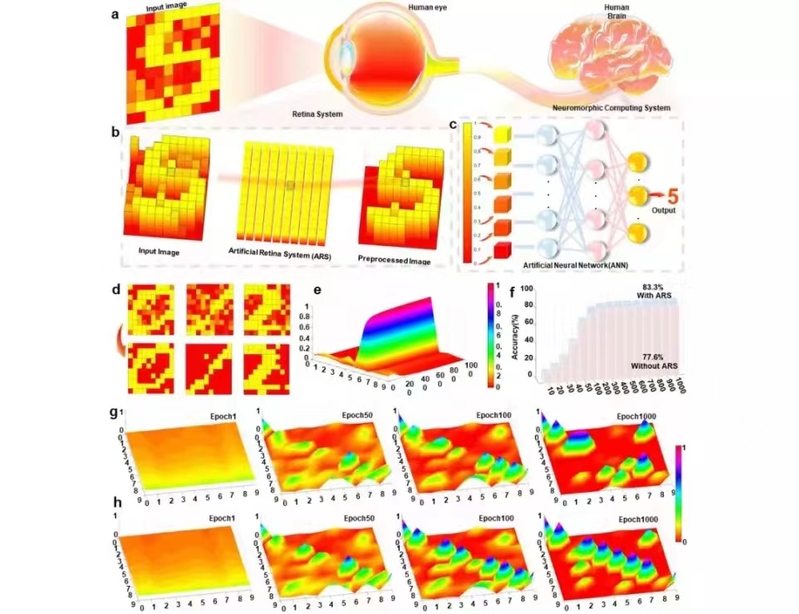
Inspired by biological eyes, an artificial retina based on 2D Janus MoSSe was fabricated by the team of Lin Chen, professor at School of Microelectronics. The artificial retina could simulate functions of visual perception with electronic/ion and optical comodulation. Furthermore, inspired by human brain, sensing, memory, and neuromorphic computing functions were integrated on one device for multifunctional intelligent electronics, which was beneficial for scalability and high efficiency. On the basis of the optoelectronic performances, light adaptation of biological eyes, preprocessing, and recognition of handwritten digits were implemented successfully. This work may provide a strategy for the future integrated sensing-memory-processing device for optoelectronic artificial retina perception application.
The study entitled“Integrated In-sensor Computing Optoelectronic Device for Environment-Adaptable Artificial Retina Perception Application”has been published in Nano Letters.
https://pubs.acs.org/doi/10.1021/acs.nanolett.1c03240
Electronics
Protein side-chain modeling framework OPUS-Rota4 outperforms AlphaFold2
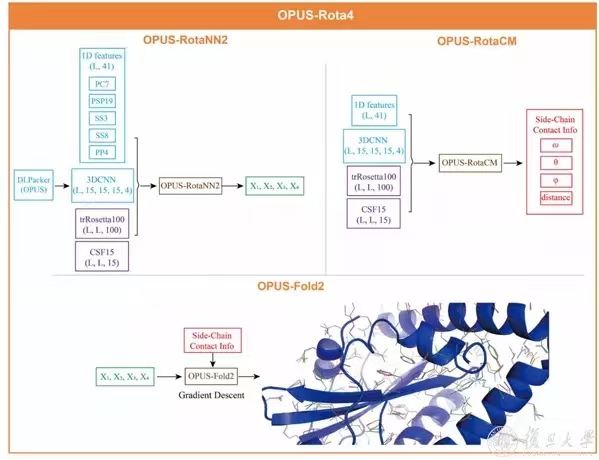
As accurate protein side-chain modeling is crucial for protein folding and protein design, an open-source toolkit for protein side-chain modeling, named OPUS-Rota4, which proves to be more accurate than AlphaFold2 in protein side-chain modeling, has been reported in a study led by Jianpeng Ma, professor at Multiscale Research Institute of Complex Systems and Shanghai AI Laboratory. The researchers apply OPUS-Rota4 on 15 FM predictions submitted by AlphaFold2 on CASP14, the results show that the side chains modeled by OPUS-Rota4 are closer to their native counterparts than those predicted by AlphaFold2.
The study entitled“OPUS-Rota4: a gradient-based protein side-chain modeling framework assisted by deep learning-based predictors”has been published in Briefings in Bioinformatics.
https://academic.oup.com/bib/advance-article/doi/10.1093/bib/bbab529/6461160#323384351
Biology and Medical Science
A comprehensive global microbial gene catalogue constructed
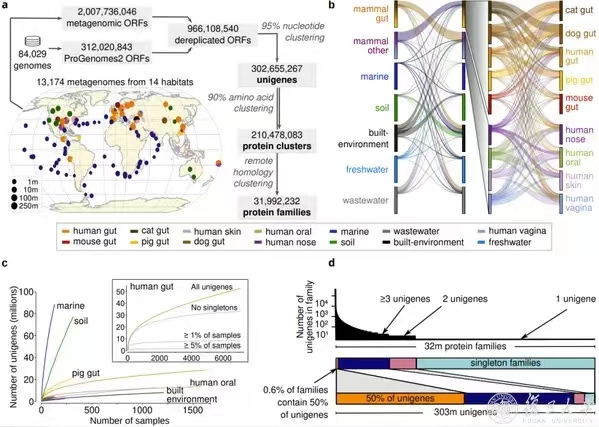
Scientists from Institute of Science and Technology for Brain-Inspired Intelligence constructed a non-redundant gene catalogue of 303 million species-level genes (clustered at 95% nucleotide identity) from 13,174 publicly available metagenomes across 14 major habitats and use it to show that most genes are specific to a single habitat. The catalogue provides a comprehensive assessment of the gene distribution across the global biosphere. The researchers found that the small fraction of genes found in multiple habitats is enriched in antibiotic-resistance genes and markers for mobile genetic elements. Luis Pedro Coelho, Xingming Zhao and Peer Bork led this study.
The study entitled“Towards the biogeography of prokaryotic genes”has been published in Nature.
https://www.nature.com/articles/s41586-021-04233-4
Biology and Medical Science
Activation of D1NAc-VP projection induces aversion
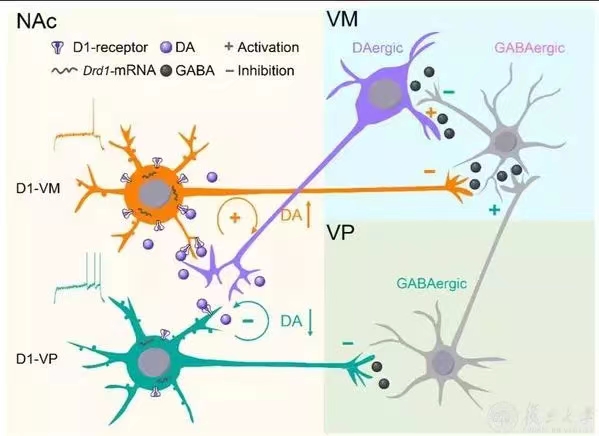
Dopamine (DA) level in the nucleus accumbens (NAc) is critical for reward and aversion encoding. The team led by Xing Liu, associate professor at School of Basic Medical Sciences, and Lan Ma, professor at State Key Laboratory of Medical Neurobiology, reports that the ventral pallidum (VP) projection of NAc D1-MSNs (D1NAc-VP) is inhibited by rewarding stimuli and activated by aversive stimuli. In contrast to the VM projection of D1-MSN (D1NAc-VM), activation of D1NAc-VP projection induces aversion, but not reward. D1NAc-VP MSNs are distinct from the D1NAc-VM MSNs, which exhibit conventional functions of D1-MSNs. Activation of D1NAc-VP projection stimulates VM GABAergic transmission, inhibits VM DAergic neurons, and reduces DA release into the NAc. Thus, D1NAc-VP and D1NAc-VM MSNs cooperatively control NAc dopamine balance and reward-aversion states.
The study entitled“A distinct D1-MSN subpopulation down-regulates dopamine to promote negative emotional state”has been published in Cell Research.
https://www.nature.com/articles/s41422-021-00588-5
Biology and Medical Science
Effect of vaccine booster on neutralization against Omicron revealed
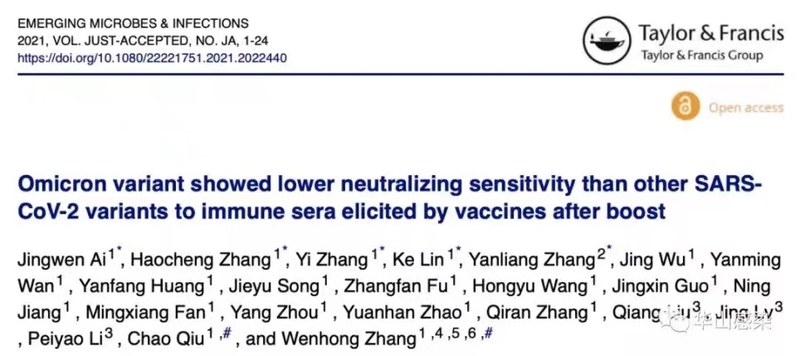
In a study led by Wenhong Zhang, professor at Department of Infectious Disease of Huashan Hospital, National Medical Center for Infectious Diseases and Shanghai Key Laboratory of Infectious Diseases and Biosafety Emergency Response, Fudan University, the researchers demonstrate that vaccine-induced immune protection might more likely be escaped by Omicron compared to prototypes and other VOCs. After two doses of inactivated whole-virion vaccines as the 'priming' shot, a third heterologous protein subunit vaccine and a homologous inactivated vaccine booster could improve neutralization against Omicron.
The study entitled“Omicron variant showed lower neutralizing sensitivity than other SARS-CoV-2 variants to immune sera elicited by vaccines after boost”has been published in Emerging Microbes& Infections.
https://pubmed.ncbi.nlm.nih.gov/34935594/
Biology and Medical Science
NeuroD1 cannot induce microglia-to-neuron cross-lineage reprogramming
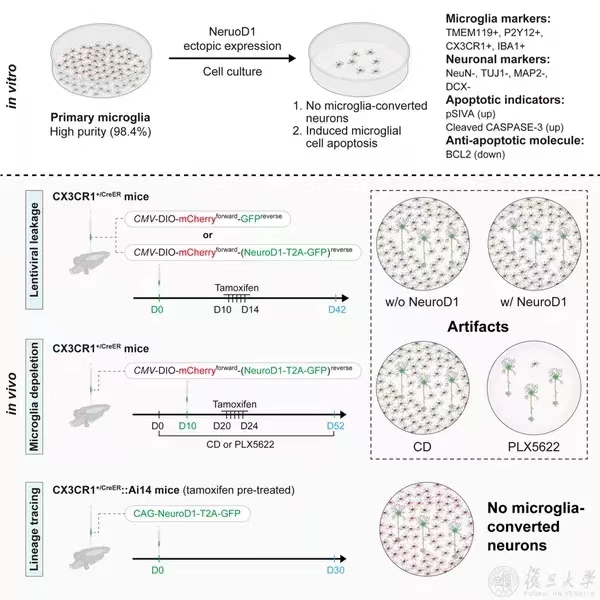
Fudan Researchers demonstrated that NeuroD1 cannot induce microglia-to-neuron cross-lineage reprogramming and proposed rigid principles for verifying glia-to-neuron conversion. Bo Peng, researcher at Institute for Translational Brain Research, Ying Mao, professor at Huashan Hospital affiliated to Fudan University and Tifei Yuan, professor at Shanghai Mental Health Center, Shanghai Jiao Tong University, led this study.
The study entitled“NeuroD1 induces microglial apoptosis and cannot induce microglia-to-neuron cross-lineage reprogramming”has been published in Neuron.
https://www.sciencedirect.com/science/article/pii/S0896627321009442
Presented by Fudan University Media Center
Source: Institute of Science and Technology


